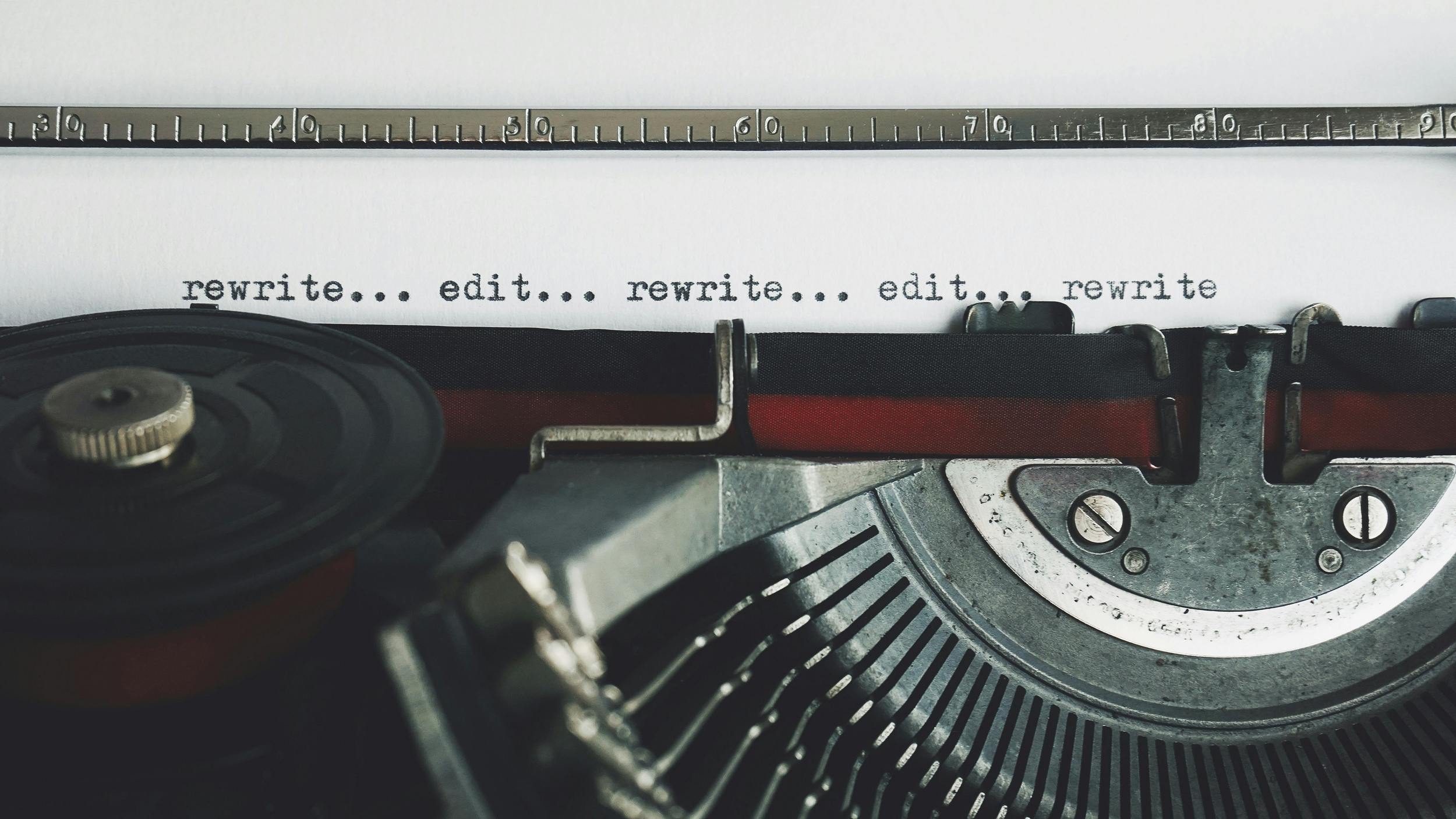There are at least two very good reasons to put time and effort into writing the description of your session: it will get you into the event you're applying for, and, once you're in, it will serve as the best tool to fill out the seats in the room you're speaking in. You don't have to be a professional writer or a literary genius to write a proper session description. With some thought and care, just about anyone can do it.
It goes without saying that you should base all of your session description writing efforts on your session being informative, interesting, and relevant to the event and topic in question. Sure, your session can have a perfect description, one that's going to get you accepted to events and gather a crowd, but if there's no actual substance behind it, you're effectively putting your speaker career at risk. You don't necessarily need to have a finished presentation before writing a session description, but you do have to be sure of what you want to talk about and stick with it once you put it in the description of your session.
Here's an overview of the things you should consider when striving to make your session sound as appealing as possible, broken into five do's and don'ts.
The do's
Come up with an interesting title
Your session's title is the first thing people will read. That includes both the organizers of the event you're submitting to, as well as all those browsing through the event's schedule – assuming your session got accepted. With that in mind, coming up with a clever title is hugely beneficial.

Avoid using complex language and weird phrasing. If it's not obvious what your session is about from its title, you should probably rewrite it. Don't count on people reading the description to find that information out, especially if you're participating in a larger event with multiple tracks happening in parallel. In most cases, the attendees will naturally flock to sessions where they have a good idea of what they'll get from.
As for the ideal title length, there are no strict rules. Looking at the data collected through Sessionize, on a sample of 500,000 sessions, 40% of them have titles that are in the 40-60 character range, which seems to be somewhat of a sweet spot.
The title should be clear and concise, but not to a point where it's completely bland. Try to use words and angles that will incite intrigue and curiosity. To give you an example, if the title of this article was: “Writing a great session description”, would it pique your interest more or less than the actual title? Here are several other examples of good and bad session titles.
| Bad titles | Good titles |
|---|---|
| The Power of Marketing | Beyond Buzzwords: Coming Up With a Marketing Plan That Actually Works |
| Finding a Good Work-Life Balance | Do 30% More in 30% Less Time and Live a Happier Life |
| Becoming a Good Speaker | 10 Tricks to Transform Your Talks |
| Secrets of Italian Cuisine | Bella Cucina: The Hidden Treasures of Italian Cooking |
| Failing in Business | The Surprising Upsides of Failing as a Professional |
Don't feel embarrassed if you spend a whole afternoon, or even multiple days, fine-tuning your session's title. You'll be greatly rewarded for your efforts.
Use the inverted pyramid structure
It's a great idea to structure your session description as the so-called inverted pyramid. Start with a conclusion. First, go over the most interesting and important facts about your session, and then dive into the details.
The inverted pyramid story structure is a concept where the essential information is communicated at the start of the text, followed by a more detailed overview and other general and background information. By opting for this approach, you're making sure that the value of your session is conveyed even to those who don't read its entire description. Need an example? Look no further than this very tip; it has an inverted pyramid structure.
Introduce a problem and offer a solution
A great way to kick off the description of your session is to start with a hook. A hook can be a personal (but relevant) anecdote or a provocative statement related to the topic. Let's say you're doing a presentation on overcoming the challenges of public speaking. A compelling hook would be:
“Imagine you’re five minutes away from the biggest presentation of your life, but your slides are a mess, and your thoughts are scattered. The panic sets in.”
Another great option is to introduce a problem related to the topic of your session and immediately follow it up with an outline of the solution. Your audience will instantly get a clear idea of what your session focuses on, but you'll also subtly inform them that you have the answers they're looking for. Using the same example as before, one possible variant of the aforementioned principle would be:
“In today’s fast-paced world, attention spans are short, and the pressure to deliver impactful presentations is high. Many professionals struggle with creating presentations that resonate with their audience. Our session will equip you with the tools to design compelling presentations and deliver them with confidence. You’ll learn how to structure your content, engage your audience, and leave a lasting impression.”
Clearly outline the benefits
Everyone likes to know what exactly they'll get from a session they decide to dedicate their time to. This is why it's a great idea to list the benefits of attending your session in its description. Do this early in the session's description; don't count on attendees (or even all event organizers) reading the entire description. Remember the aforementioned inverted pyramid story structure – the same principle applies here. Here's an example:
Unlock the Power of Productive Networking: A Guide to Building Valuable Connections
You’ll walk away with actionable tips and a clear understanding of how to navigate networking events successfully, ensuring that every handshake counts. Learn how to maximize your network, which communication techniques work (and which ones definitely don't), how to leverage social platforms, and properly get into a networking mindset.
With an opener like that, you can clearly see how your session's value is getting across even if event organizers and/or attendees don't read the remainder of the description – the part where you would dive into the details. Such description can stand completely on its own.
Edit, format, and proofread

A common misconception is that editing a session description equals checking and correcting the grammar and punctuation. While that's an essential part of it – and there are dozens of online tools to help you with it – a key part of editing is also trimming the excess (eliminating redundant phrases and unnecessary words) and avoiding repetition. The goal is to be as concise as possible. Read, re-read, and then read again – both with your inner voice and aloud. Until your session description has a nice flow, and you can no longer spot any part of it worth removing, you're not done editing. If you can't decide if some part of the description can be removed, that probably means that it can. When something absolutely has to stay in, you won't even consider eliminating it.
How long should your session description be? The ideal length of a session description can vary depending on the event and its guidelines, but here are some general pointers to consider:
- Be concise. Aim for a description that is succinct yet informative. It should be long enough to cover all key points but short enough to maintain the reader’s interest
- Mind the word/character limit. Some events may provide a specific word or character limit for session descriptions. If that’s the case, don't go over it
- Quality over quantity. Focus on the quality of the content rather than the length. Ensure that every sentence adds value and clarity to your description
If no specific word limits are imposed, a good session description is around 150 to 300 words long. This range gives you enough space to include all necessary details without overwhelming the reader.
The don'ts
Using incomplete and work-in-progress description
Applying to an event with an incomplete session description is highly inadvisable. Event organizers often receive numerous applications, and this is why you want to leave a strong first impression, which is achieved with a complete and polished session description rather than one that's obviously hacked together and missing important information. A well-crafted and detailed session description can make you seem more professional and give you an edge over others who may have submitted less detailed proposals. Instead of submitting an incomplete description, consider taking the time to fully develop your ideas and present them in the most compelling way possible.
Using passive voice
Using passive voice isn’t inherently bad, but it can make your writing less direct and more wordy, which generally isn't ideal for a session description. Passive sentences lack clarity and make the writing feel detached and impersonal – exactly what you want to avoid in your session description.
Let's say your session is about the environmental importance of reforestation. Instead of writing “Various tree-planting techniques will be demonstrated” in your session description, opt for the active voice variant, such as “You will see a demonstration of various tree-planting techniques". You can even consider an even more direct “I will demonstrate various tree-planting techniques” variant, which has a more “aggressive” tone, but can be a better fit for certain situations and events.
The seemingly small switch from the passive voice to the active voice can make your session description come off as much more engaging.
Letting AI do the work for you

The temptation to enter a prompt and have an AI chatbot simply write the session description for you is a strong one, but do your best to resist it. You'll end up with a description that's going to lack your personal touch. It won't translate your passion and enthusiasm for the topic, nor will it necessarily resonate with the target audience. After all, no artificial intelligence can know your audience as well as yourself, meaning only you can come up with a perfectly tailored session description.
Having said that, AI chatbots can help you brainstorm various approaches, give you ideas about where to start, and even produce a usable draft of your session's description. If you decide to use AI, make sure to triple-check the facts, and edit the description as much as necessary, until you feel it completely conveys your own thoughts, ideas, and expertise.
Overpromising
Did you ever see a fantastic scene in a movie trailer, only to realize it's not even a part of the movie after watching it? The same feeling of disappointment will be felt by your audience if your session description promises content, such as solutions and answers, you don't eventually deliver. This can (and will) lead to poor reviews, a hit to your credibility, and a direct loss of business opportunities. Opt for an authentic session description, one that honestly describes its contents. Set realistic expectations about what attendees will learn from it. Remember, it's much wiser to underpromise and overdeliver than vice versa.
Not considering the focus of the event
Even if you have a session description you're perfectly happy with, don't rely on using it for every event you're applying to without some slight adjustments. Every event, even those built around the same topic, is somewhat different, and your session description has to reflect that. Do your best to learn about the focus of the event you're submitting the session to and do your best to concisely explain why your session is a great fit for it. Your efforts won't go unnoticed by event organizers, thus making it more likely that your submission will get accepted.
Sessionize allows you to easily organize a call for speakers (call for papers), evaluate the sessions, inform speakers about their session status, build the schedule, and handle various other aspects of managing an event. Try it out today, with no limitations and completely free of charge.
